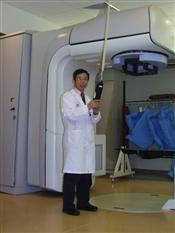A Practical Workflow to Determine Patient-Specific Critical Organ Dose Constraints Considering Organ-Specific Radiobiological Effect for Reirradiation Planning
A Tai*, E Quashie, K Kainz, E Paulson, E Gore, J Bovi, M Awan, M Straza, X Li, Medical College of Wisconsin, Milwaukee, WI
Presentations
PO-GePV-T-215 (Sunday, 7/10/2022) [Eastern Time (GMT-4)]
ePoster Forums
Purpose: In reirradiation (RI) planning, it is necessary to consider biological effects of previous irradiation (PI) on organs at risk (OARs). We have developed a practical workflow to consistently determine patient-specific tolerable doses to OARs considering organ-specific biological effects for RI planning.
Methods: A workflow was developed using MIM software to (1) host patient retreatment plan data and organ-specific radiobiological model parameters extracted from pooled clinical data with a linear-quadratic-linear (LQL) model; (2) perform biologically effective dose (BED) calculation considering 0% to 30% repair of radiation injure between PI and RI, rigid or deformable image registration (DIR), dose summation and plan review in term of the equivalent total physical dose in 2-Gy fractions (EQD2) using the LQL model. The usefulness of the workflow was demonstrated using the RI planning data of 20 patients with various types of cancers treated in our clinic. The OARs of concern among the 20 patients are cord (15 patients), cauda equina (3), sacral nerve (1), stomach (1) and esophagus (1). The obtained results were compared with those by conventional calculations with the linear-quadratic (LQ) model. The dose summation errors due to DIR were estimated using a dose volume histogram overlay technique.
Results: The maximum composite EQD2 for cord and cauda equina were in the ranges of 42.7-107.4 and 68.4-93.9 Gy, respectively, for the patients studied. The present maximum composite cord doses are different by up to 14% from those determined using the conventional EQD2 method. The maximum composite EQD2 were 52.9, 68.3±1.2, and 77.1±1.0 Gy for sacral nerve, stomach and esophagus, respectively. Three patients were treated with a pulsed-low-dose-rate technique because their composite EQD2 for cord significantly exceeded the tolerable doses.
Conclusion: The newly- developed workflow is able to consistently determine patient-specific OAR dose constraints with considering organ-specific radiobiological effects for RI planning.
Keywords
Radiobiology, Tolerance Doses, Modeling
Taxonomy
TH- Radiobiology(RBio)/Biology(Bio): RBio- Photons
Contact Email



